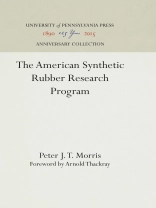This history of the government-funded synthetic rubber research program (1942-1956) offers a rare analysis of a cooperative research program geared to the improvement of existing products and the creation of new ones. The founders of the program believed the best way to further research in the new field was through collaboration among corporations, universities, and the federal government. Morris concludes that, in fact, the effort was ultimately a failure and that vigorous competition proves the best way to stimulate innovation. Government programs, like the rubber research program, are far better at improving existing products, the author contends, than creating wholly new ones.
About the author
Arnold Thackray’s many roles in the public life of scholarship include founding and building both the Science History Institute and the University of Pennsylvania’s Department of History and Sociology of Science. Earlier, he was central to the creation of what would become the Churchill Archives Centre (the largest repository of Winston Churchill’s papers) at Churchill College, University of Cambridge. He also served as treasurer of the American Council of Learned Societies for over a decade. Thackray has written, edited, or published some two dozen books on the modern technosciences, from Atoms and Powers: An Essay on Newtonian Matter-Theory and the Development of Chemistry (1970) to Moore’s Law: The Life of Gordon Moore, Silicon Valley’s Quiet Revolutionary (2015).












